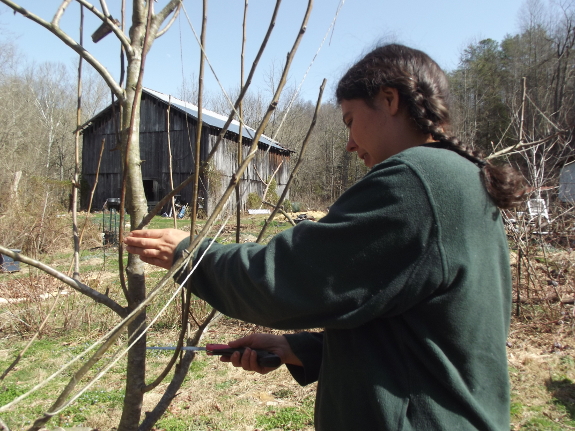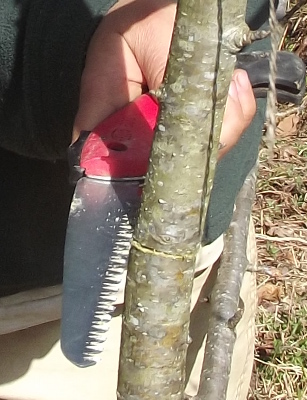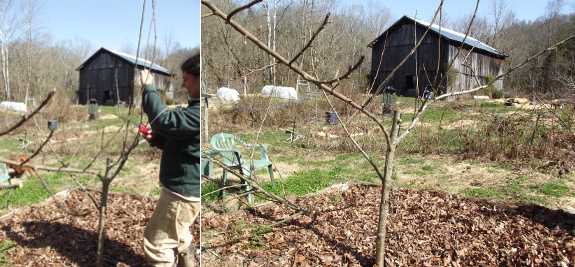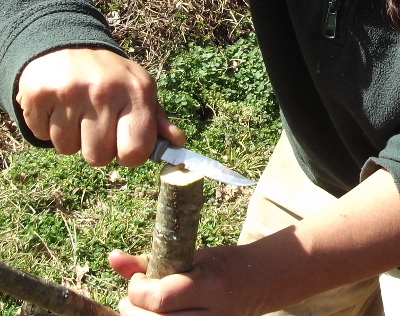
Preparing a pear tree to be topworked

A previous post about topworking explained that my four year
old pears are small enough to graft all in one go. However, I've
also read that it can be tough for a tree of any size to suddenly lose all of its branches, so some
orchardists leave a few in place to shade the scionwood a bit so it's
not exposed to blazing sun while trying to get established. As a
result, I decided to cut into the main trunk just above the first pair
of limbs.
 The
other factor to consider when preparing your tree to be grafted onto is
ensuring you make a very clean cut. The success of a graft
depends on the cambium, which is the thin layer of living tissue just
under the bark. So, if you cut a tree and it tears half the bark
off one side in the process, your grafts are going to be less
successful.
The
other factor to consider when preparing your tree to be grafted onto is
ensuring you make a very clean cut. The success of a graft
depends on the cambium, which is the thin layer of living tissue just
under the bark. So, if you cut a tree and it tears half the bark
off one side in the process, your grafts are going to be less
successful.
I worked around this
potential problem by cutting about halfway through the tree, then
coming around to the other side and cutting through the bark
there. When I finished my cut, the top fell off the tree without
damaging the bark at all. (By the way, these sharp
little saws are awesome for making precise cuts like this.)

 Timber!
Timber!
The final step in
preparing the tree to be grafted onto is to trim any irregularities
from the wood. One of my cuts came out perfect, and the other
needed just a tad of whittling with my sharp knife. Now the tree
was ready to accept scionwood and to be turned into a new variety.
| This post is part of our Grafting Experiment lunchtime series.
Read all of the entries: |
Want more in-depth information? Browse through our books.
Or explore more posts by date or by subject.
About us: Anna Hess and Mark Hamilton spent over a decade living self-sufficiently in the mountains of Virginia before moving north to start over from scratch in the foothills of Ohio. They've experimented with permaculture, no-till gardening, trailersteading, home-based microbusinesses and much more, writing about their adventures in both blogs and books.
Want to be notified when new comments are posted on this page? Click on the RSS button after you add a comment to subscribe to the comment feed, or simply check the box beside "email replies to me" while writing your comment.

I love my 12" none-folding saw. I can cut down a tree up to 6" across with no problems. I have been pruning big limbs off of the pine trees around the property for my hugelkultur piles. It has the teeth of a paranah.
I, also, carry a 6" Fiskars in my BOB in the trunk of my car.
I can not say enough good about these blades.